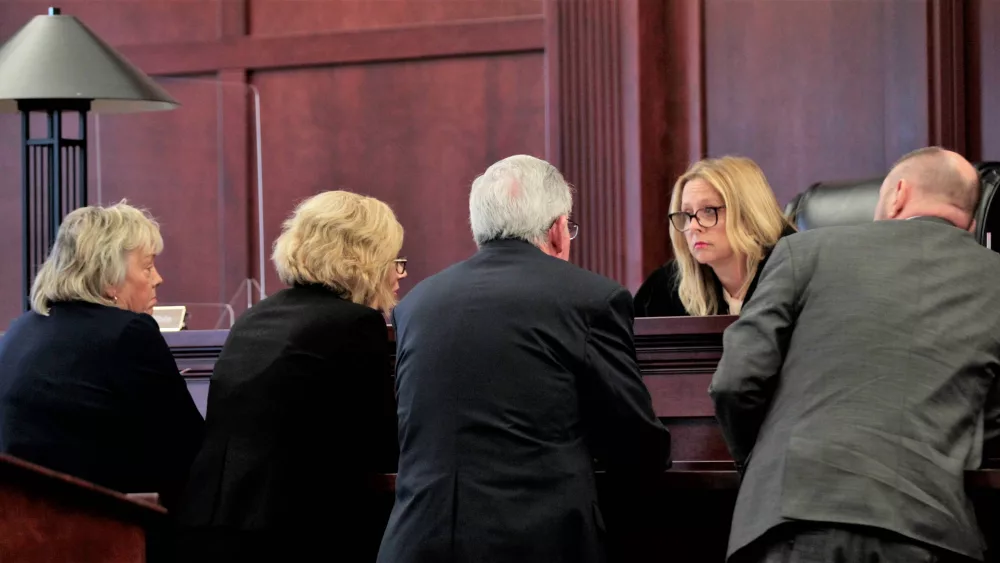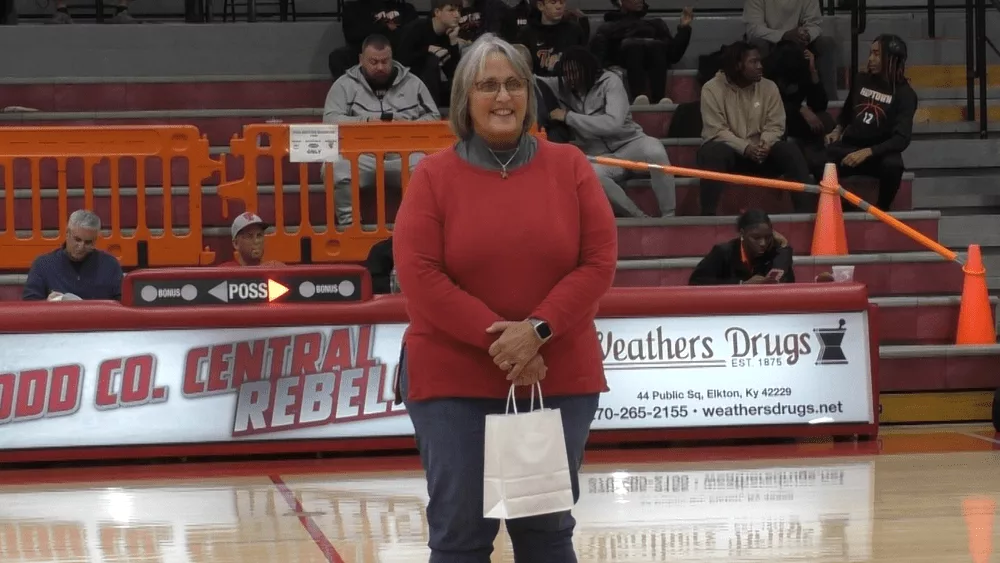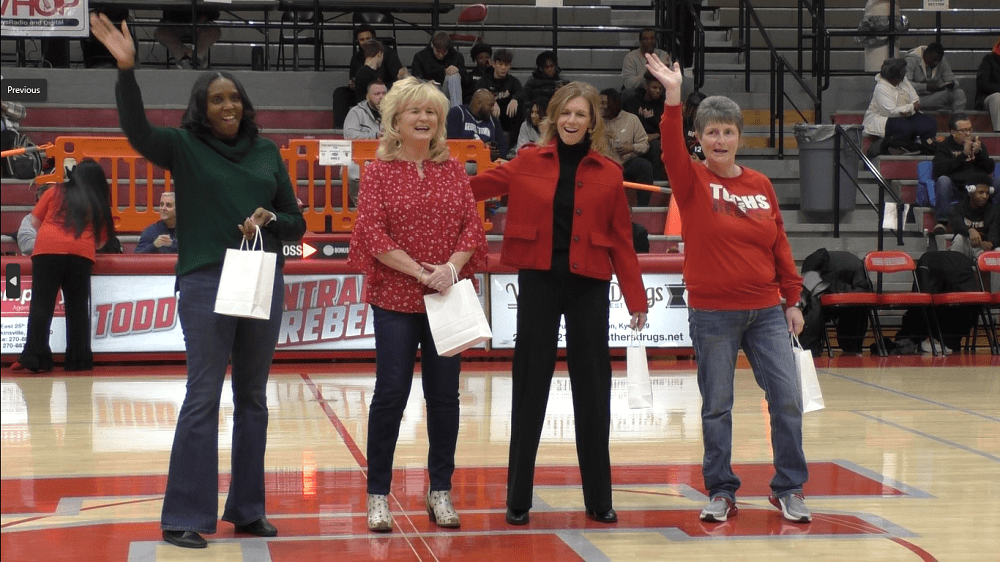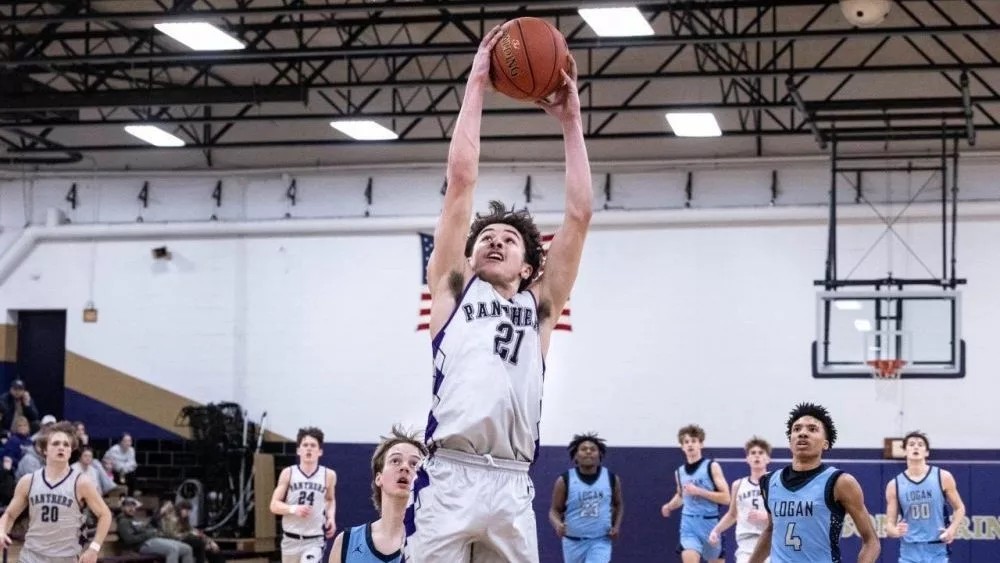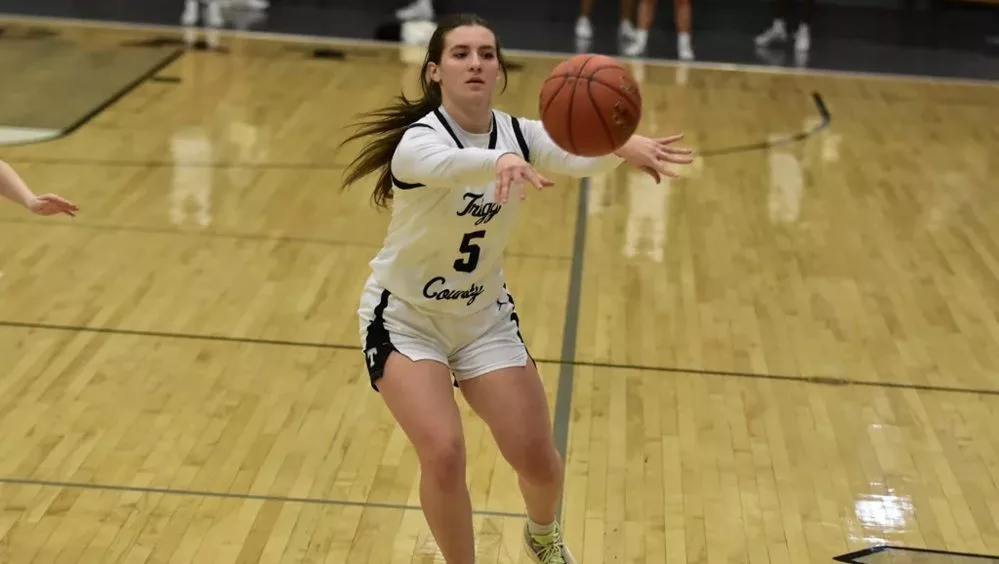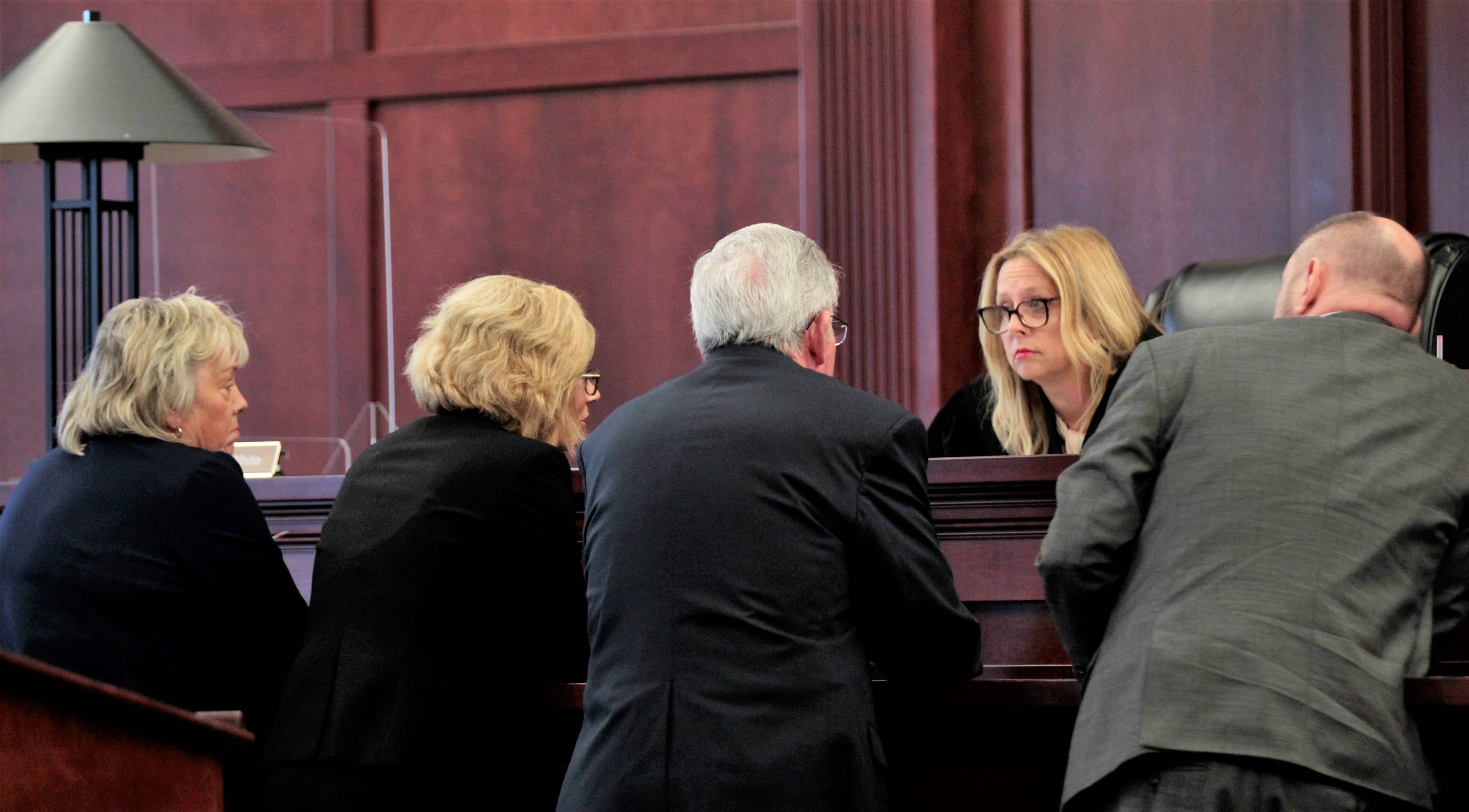
A jury of seven men and seven women listened to opening arguments Thursday morning in Trigg County Circuit Court, concerning the potential guilt or innocence of Landon Stinson.
Charged with the July 2, 2021, Cerulean Road murders of Sue Faris and Matthew Blakeley, Commonwealth’s Attorney Carrie Ovey-Wiggins and Defense Attorney Bill Deatherage each took a half hour — laying out their road maps on what occurred in those summer days more than two years ago.
Ovey-Wiggins told the jury that, over the next few days, her office would be able to show that both Faris and Blakeley were shot to death with a semi-automatic 9mm sometime between 4:40 PM and 6:45 PM that day.
She said it wasn’t the “scene of a robbery,” because the purse of Faris remained largely intact. Blakeley was located in a recliner with three wounds. Faris was in a larger chair with one.
As word spread of their deaths, Ovey-Wiggins said family members began gathering around the residence. Except one: Stinson. Fourteen hours after the murders, his license plate had pinged at 8:12 AM, July 3, in Amarillo, Texas. His bank account had been emptied of $320. A pair of phones, perhaps unusable, had been destroyed — one found by his mother, Rhonda Neighbors, at his recently-acquired Julien Road apartment.
On July 4, 2021, Stinson called Neighbors to tell her he’d gone to California, and that on the day of July 2, he’d been woken up by Blakeley late for his job at the Walmart Distribution Center in Christian County. Afraid he’d ran up his final chances with the company, he left for trip to California — stopping by the Faris residence to pick up his drug scales. Ovey-Wiggins said this phone conversation, which jurors will hear later, has no mention of the murders.
On July 5, 2021, Stinson was picked up by California Highway Patrol for hitch-hiking on the freeway; an illegal procedure in the state. He’d run out of gas and abandoned his red truck — leaving behind everything, including identifying materials. Once Stinson’s name was revealed, an indictment pinged back to Kentucky, and KSP sent agents David Dick and Brian Hill to interview him.
Not long after the murders, Ovey-Wiggins said Blakeley’s cell phone — found near his body — was analyzed, and text messages confirmed a mutual drug deal between he, Stinson and an unnamed dealer in Christian County, in which marijuana and cocaine were being sought for cash and distribution.
In following, however, Deatherage noted that the Commonwealth “has no evidence” and that “all they’re going to offer is speculation.”
It was confirmed that while a murder weapon has been determined through forensics, the actual murder weapon has yet to be located. A box for a second 9mm was located at his Julien Road residence — one that Ovey-Wiggins noted had been reported stolen two years prior to the incident.
Deatherage called the trip to California “bad timing” on his client’s part, but one he’d “long been planning” through the years. He also noted the murders were “grisly” and “up close,” too personal for Stinson, he said, who remained emotionally close to Faris and Blakeley, and no DNA confirmation to support such.
Deatherage also noted that a nearby neighbor has issued statements indicating a small white car, with a Caucasian male as its driver, barreled out of the driveway sometime during that disturbing afternoon, and has yet to be accounted for in several occasions.
Deatherage asked more than once: “What is the motive?” And he issued to the jury that Stinson was KSP’s “only suspect,” honing in on him while failing to entertain other options.
Full testimony is expected to begin after lunch today.


